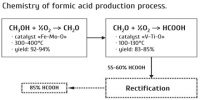Ethanol 85 or E85 is probably the most widely used of the ethanol-gasoline blends at the present time.We know a value of 25 pS-1 would be typical of the electrical conductivity of gasoline. Ethanol alone for fuel use in Brazil° has an electrical conductivity specification of 500 μS-1 a factor of 20 million higher than the value given in the previous sentence for gasoline. The conductivity of Ethanol 85 is of the order of μS m-1 the precise value depending on the amount of gasoline since, as we have seen, this can be as low as 70%. The high electrical conductivity of Ethanol 85 does, of course, make for safety in handling, electrical charge generated by movement being readily conducted away before it can form an ignition source.
We know a value for the dynamic viscosity of a particular example of Ethanol 85 of 1.016 cP which, using a density for ethanol only, converts to a kinematic viscosity of 1.3 cSt. This is almost twice the value given for an M85 fuel earlier in this chapter and at the high range of value for gasoline. This is not an important factor: it was argued in Section 3.2.3 that variations in the kinematic viscosity of the fuel, be it gasoline or a blend, do not measurably affect fuel pump performance.
Lubricities of gasoline simply be stated that Ethanol 85, in common with other ethanol-gasoline blends, has a poorer lubricity than gasoline alone and that this is a factor in the manufacture of flexi-fuel vehicles (FFV).












